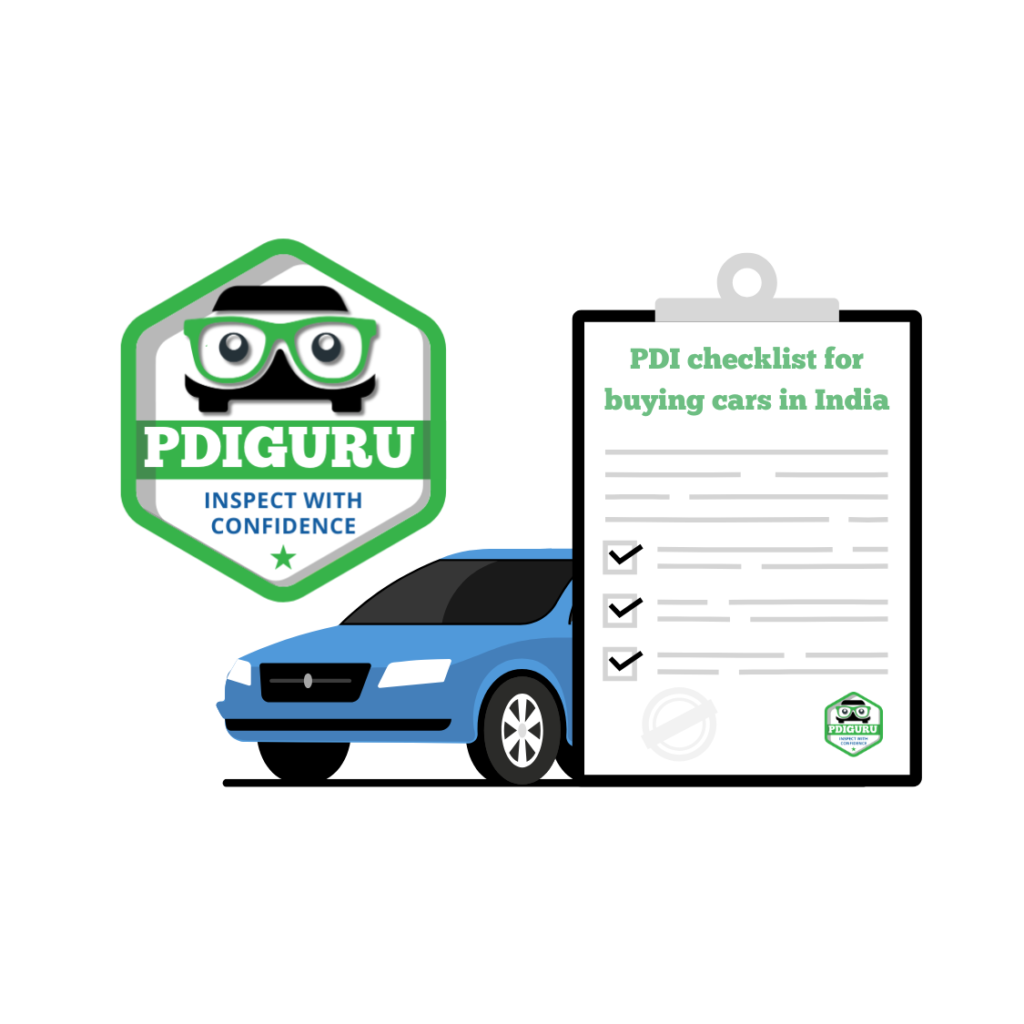When receiving a new car, performing a Pre-Delivery Inspection (PDI) is crucial to ensure your vehicle is in top condition. While many car buyers focus on basic checks like looking for scratches or ensuring tire pressure is correct, going beyond these basics is essential for a thorough evaluation.
Before diving into advanced PDI tips, it’s important to first conduct a comprehensive PDI. This foundational inspection will cover all the essential checks—such as exterior condition, tire health, and fluid levels—that ensure your car is generally in good shape. A comprehensive PDI checklist will help guide you through these basic steps before moving on to more advanced inspection techniques. Once the basics are covered, you can focus on the more intricate aspects of your car’s condition.

In this guide, we’ll explore advanced PDI tips that will allow you to detect hidden issues, ensuring your car is truly ready for the road. These tips go beyond the obvious and will help you evaluate your vehicle’s mechanical, electronic, and structural integrity in depth.
1. Perform a Thorough Diagnostic Check on the Car’s Electronics
Modern cars are packed with sophisticated electronic systems, from the infotainment unit to advanced safety features like lane-keeping assist and automatic braking. Often, basic PDIs overlook the thorough inspection of these systems, which can sometimes hide software glitches or faults that affect vehicle performance.
PDIGuru ProTip
Electronics might seem to work fine at first glance, but thorough testing is essential to ensure every feature functions properly. Connectivity, responsiveness, and functionality should all be tested in detail.
Actionable Steps:
- Test the infotainment system: Ensure Bluetooth, USB ports, and all multimedia features are working as expected.
- Check the backup camera and sensors: Test reverse cameras and parking sensors for clarity and responsiveness.
- Test safety systems: Check lane assist, adaptive cruise control, and collision avoidance systems by simulating scenarios in a safe environment.
2. Inspect the Car’s Exterior with UV or LED Light
While daylight is good for spotting scratches or dents, UV or LED lights can reveal flaws that might otherwise go unnoticed, such as uneven paintwork, factory overspray, or even hidden defects in the clear coat.
PDIGuru Pro Tip
Use portable UV or LED lights to detect imperfections that regular lighting can’t reveal. These lights can highlight inconsistencies like clear coat peeling or orange peel texture.
Actionable Steps:
- Use UV or LED light: Move the light across the car’s body, focusing on hard-to-see areas like door panels, the roof, and wheel arches.
- Look for paint inconsistencies: Pay attention to mismatched colors or rough textures, which might indicate subpar paintwork or previous repairs.
3. Inspect the Undercarriage for Rust and Structural Integrity

Many basic PDIs fail to check the undercarriage, where rust, oil leaks, or structural issues may be hiding. This part of the car is crucial for safety and longevity, so an inspection here is a must.
PDIGuru Pro Tip
Use a mirror and flashlight or a car lift to inspect the undercarriage thoroughly. Look for signs of rust, leaks, or any structural weaknesses that could compromise safety.
Actionable Steps:
- Look for rust or corrosion: Examine the underbody for rust, particularly near joints and bolts.
- Inspect the suspension: Check for any broken or cracked suspension components.
- Check for fluid leaks: Inspect the exhaust system, oil pan, and transmission for leaks.
4. Examine the Alignment and Suspension System
Your car’s alignment and suspension affect not just ride comfort but also safety and tire longevity. Misalignment can lead to uneven tire wear and compromised handling, making a thorough inspection of these systems essential.
PDIGuru Pro Tip
While a test drive can provide some insight, visual checks and tire wear patterns are key indicators of alignment and suspension issues.
Actionable Steps:
- Check tire wear: Uneven wear can point to alignment problems.
- Test the suspension system: Push down on each corner of the car and see if it rebounds smoothly.
- Look for fluid leaks: Inspect shock absorbers and suspension components for any sign of leakage.
5. Check Brake Pads and Rotors for Wear
Brakes are one of the most vital parts of your vehicle’s safety system. Basic PDI checks may test whether the brakes work, but it’s essential to also inspect the brake pads and rotors for any signs of wear that could compromise braking performance.
PDIGuru Pro Tip
New cars should have minimal wear on brake components. Look for scoring, grooves, or excessive rust on the pads and rotors as these are signs of potential issues.
Actionable Steps:
- Inspect the brake pads: Check the thickness to ensure they are within the manufacturer’s specifications.
- Check the rotors: Look for grooves, rust, or uneven surfaces on the brake rotors.
- Test the brakes: Perform a test stop during your test drive to check for vibrations or irregular responses.
6. Evaluate Fluid Levels and Quality

While fluid levels are part of any basic PDI, assessing the quality of the fluids is equally important. Contaminated or old fluids can significantly affect vehicle performance and longevity.
PDIGuru Pro Tip
Inspect the quality of each fluid, not just the level. Discoloration, contamination, or any unusual consistency could indicate deeper issues.
Actionable Steps:
- Check the engine oil: Look for both the level and color. Fresh oil should be amber, while old or contaminated oil will appear dark or gritty.
- Examine the coolant: Ensure it’s clean, with no signs of contamination or rust.
- Check brake fluid: Ensure the brake fluid is clear, not cloudy, or discolored.
7. Test the Battery and Charging System
The battery and charging system are often overlooked in a basic PDI but are crucial to your car’s performance. A weak battery or faulty charging system could lead to problems such as dim lights or difficulty starting.
PDIGuru Pro Tip
Look for corrosion around the battery terminals, and use a voltmeter to check if the battery is fully charged.
Actionable Steps:
- Inspect battery terminals: Check for corrosion or loose connections around the terminals.
- Test the battery: Use a voltmeter to measure the battery voltage (it should be around 12.6V when the car is off).
- Check the alternator: Look for any warning lights or signs of issues during the test drive.
8. Evaluate the HVAC System (Air Conditioning and Heating)
The HVAC system is often overlooked in basic PDIs, but it’s crucial to test the air conditioning and heating systems thoroughly to ensure comfort and reliability.
PDIGuru Pro Tip
Make sure the A/C blows cold air quickly, and the heating system warms up the cabin efficiently. Listen for any odd sounds that may indicate malfunctioning fans or compressors.
Actionable Steps:
- Test the A/C: Ensure it cools the cabin quickly and consistently.
- Check the heating system: Verify that it warms up evenly and efficiently.
- Listen for unusual noises: Strange sounds from the vents or fans may indicate a problem.

Common Issues Found During Pre-Delivery Inspection (PDI) and How to Address Them
During a Pre-Delivery Inspection (PDI), several common issues may arise that could impact the vehicle’s performance and safety. Some of the most frequent problems include engine oil leaks, worn-out tires, brake issues, and suspension problems. Additionally, electrical system malfunctions, such as faulty lights or power window failures, are often found during inspections. In India, cars may also show signs of corrosion, especially around the undercarriage, due to exposure to humidity and rough road conditions. These issues may not always be obvious at first glance but can lead to costly repairs down the road. To help you identify and address these common problems, we’ve curated a dedicated blog on the Common Issues Found During Pre-Delivery Inspection (PDI) and How to Address Them. Be sure to check it out for an in-depth look at what to watch for when inspecting your new car.
Conclusion
Performing an advanced PDI goes beyond checking for visible defects or basic issues. By following these advanced PDI tips, you’ll uncover hidden problems that could affect your car’s performance and safety. Whether it’s checking the car’s electronics, inspecting for rust, or ensuring proper fluid levels, thorough inspections can help you avoid costly repairs in the future.
Ready to perform a thorough advanced PDI?
Download our Comprehensive PDI Checklist to guide you through every step and ensure your new car is road-ready!
Frequently Asked Questions (FAQs)
An advanced PDI typically takes 1-2 hours, depending on the complexity of the vehicle. It’s important to allow enough time for a detailed inspection of each system.
Yes, Before diving into advanced PDI, it’s important to first conduct a comprehensive PDI. This foundational inspection will cover all the essential checks—such as exterior condition, tire health, and fluid levels—that ensure your car is generally in good shape. Our Pre-Delivery Inspection (PDI) Checklist for Cars in India covers all these key aread. Download our detailed checklist for step-by-step guidance on performing a thorough inspection. It includes expert tips and space for notes to help you catch potential issues before delivery.
es, many parts of the advanced PDI can be done yourself. However, certain tasks—like inspecting suspension components or diagnosing electronics—may require professional tools or expertise.
If you discover any issues during the PDI, discuss them with the dealership. Make sure they are resolved before accepting the car, or ask for a solution. If you need more guidance on handling these types of situations, we’ve written a dedicated blog on “How to Handle PDI Issues and Dealership Complaints Effectively: A Guide for Car Buyers” This resource will help you navigate the next steps when dealing with discrepancies and ensure you have a smooth resolution process.
Some common issues include faulty electronics, unbalanced suspension, or minor leaks. These problems can often be fixed before taking the car home, saving you time and money. Here you can find more about the Common Issues Found During Pre-Delivery Inspection (PDI) and How to Address Them.



